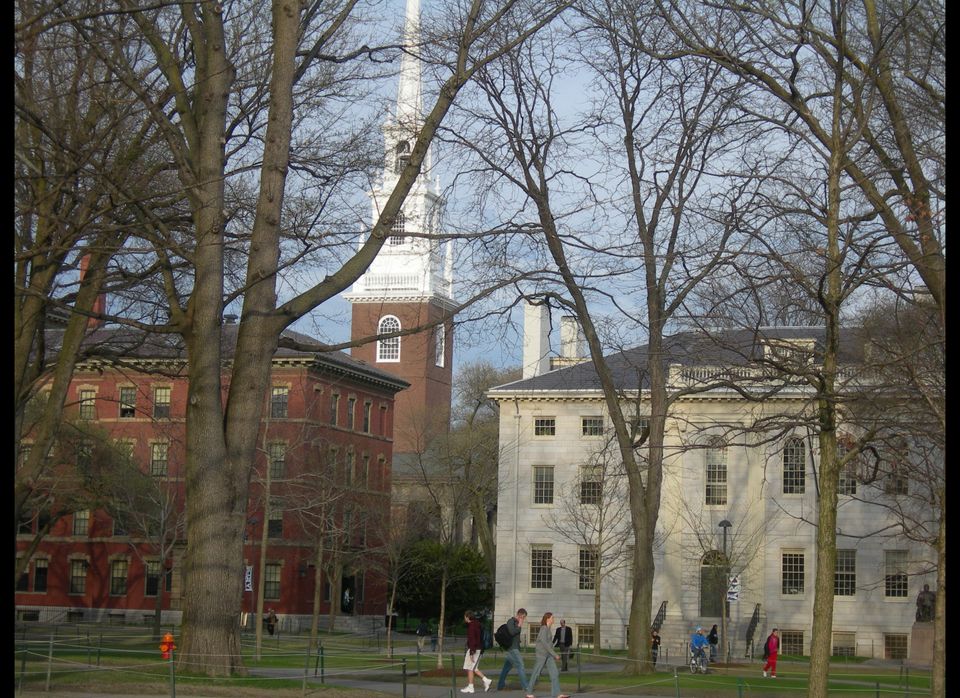
To a seasoned bargain hunter, 75 percent off a Harvard University education may sound like a deal that's too good to be true. But for nearly two thirds of undergrads enrolled during the 2011-2012 school year, the average discount from the total cost was almost that extreme.
Though Harvard's published tuition and fees for the 2011-2012 school year alone totaled $39,849, the 60 percent of students who received need-based aid paid, on average, just $14,495 for tuition and fees, room and board, and other expenses. The widespread discounting makes Harvard not only one of the top National Universities in the U.S. News Best Colleges rankings for 2013, but a top Best Value School as well.
School-reported data show that, despite sticker prices that tend to rise each year, there are deals to be had for qualified students at top schools like Harvard nationwide. The U.S. News Best Value Schools rankings identify colleges in or near the top half of their rankings categories that discount their net price of college to a large percentage of financially needy students.
In the 2013 rankings, 50 National Universities were deemed Best Value Schools, as well as 40 National Liberal Arts Colleges, 53 Regional Universities, and 40 Regional Colleges. Though not all schools on the lists post average discounts as high as Harvard's, the aid awards can lower the cost of college significantly for students who receive need-based aid.
[Read more about the Best Value Schools methodology.]
At the University of Richmond, for instance, published tuition and fees totaled $43,170 for the 2011-2012 school year. But the institution, ranked the 11th Best Value School among National Liberal Arts Colleges, ultimately cut an average of 66 percent off the total cost for 45 percent of undergraduates, dropping the average net cost for those award recipients to $18,309.
"We want to make sure that [for] students who have earned admission to Richmond ... the cost of attendance does not stand in their way of joining our community," says Nanci Tessier, the school's vice president for enrollment management. "We want to make sure that our education is accessible to them. Because of that, we devote significant financial resources."
Best Value Schools are scattered across the country, from Colby College in Maine to Pepperdine University on the California coast and Gonzaga University in Washington state to Centre College in Danville, Ky. Of the 183 Best Value Schools in the 2013 rankings, just 13 are public institutions. But at those schools, even out-of-state students may be able to score a good deal.
The rankings formula, which divides a school's U.S. News Best Colleges 2013 overall score by the average net cost for students receiving need-based aid and balances that with the percentage of students receiving that aid and the average total discount, considers out-of-state student data for public schools.
At Texas A&M University--College Station, for instance, 67 percent of out-of-state students received need-based grants in 2011-2012, bringing the average total cost for those nonresidents to $18,366. Even in budget-strapped California, the University of California--Riverside awarded need-based aid to 35 percent of out-of-state students last year, dipping their average net cost to $16,085 and giving the National University a No. 24 ranking in the Best Value Schools.
The bargains that can be found at Best Value Schools highlight the need for prospective college students and parents to utilize net price calculators, free online tools that colleges are required by law to provide. The calculators take family finances and, in some cases, student performance into account to estimate what a year's total cost at that college could tally. One aim of the calculators is to show families that, despite a high price tag, a school may actually cost a lot less for them.
"It's important for students to understand that the sticker price is not what every student will pay who attends the institution," Tessier of Richmond notes. "It's wise to use the net price calculators to understand what the net price might be for them before they make decisions about ruling out a college from consideration."
Students hunting for a good deal need not stick to the Best Values lists, as colleges and universities offer a variety of cost-cutting opportunities. Some colleges are tuition-free, for instance, while other schools have previously claimed to meet students' full financial need. (By nature of their bargains, both have some overlap with the Best Values lists.)
There are also colleges that guarantee to keep tuition rates steady for the four years it takes to earn a degree, which adds predictability--if not a huge savings--to the process of paying for college. What's more, there are regional tuition break programs for students who stay relatively close to home, and three-year degree programs that effectively shave off one fourth of the total cost of college.
But even a great bargain isn't a good choice if it's from a college that isn't right for you.
"It makes no sense to go to an engineering school if you want to major in biology," notes Arnold Woods, director of financial aid at Iowa's Grinnell College. "There has to be some rationale for selecting an institution, so a student should select an institution because of its excellence of what it does and what it offers. Certainly, finances are part of that process.
"If you're looking at several schools with like qualities that you're looking for and one offers a more handsome award, that makes the selection process a bit easier."
Searching for a college? Access our complete rankings of Best Colleges.
